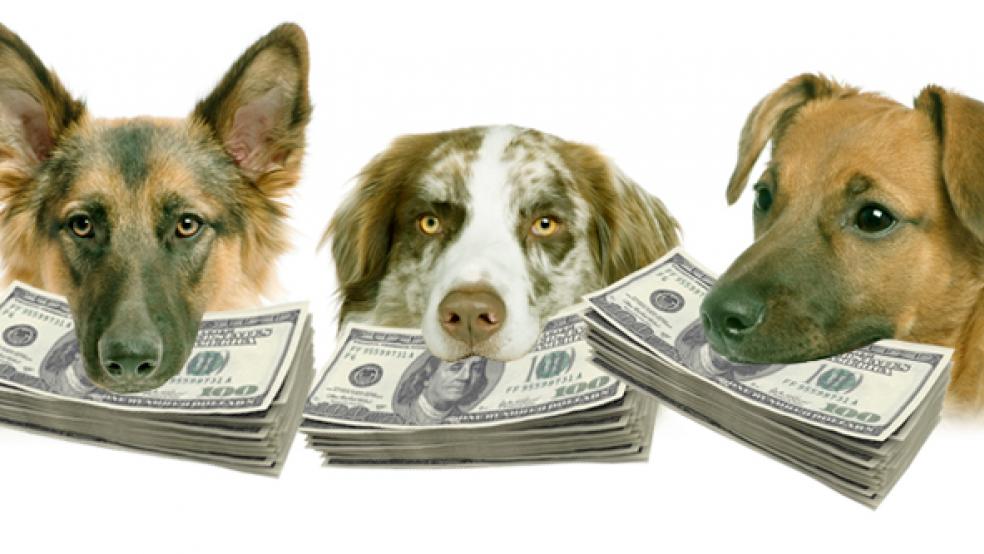With banks on the receiving end of a lot of public wrath these days, it might not seem to be the most opportune time to launch a new one. But a bank branding consultant in Oregon is pushing ahead anyway, with a unique – some might say strange – concept for a niche web-based financial institution.
The name? Wag Bank. The target demographic? Dog lovers.
Occupy Wall Street protesters notwithstanding, most people in the U.S. don’t hate banks, says Jeff Stephens, president of Portland-based Creative Brand Communications, a marketing consultancy for financial institutions. Bankers’ problem, he says, is much more mundane.
“Most people are rampantly indifferent to banks,” Stephens says. “It’s because of the sameness of the products and the services, and the sameness of the experience. At most financial institutions, if you went inside and the logos were covered up, nobody would have any idea where they were.”
Stephens figures that if he can offer people a financial institution that represents something they feel passionately about, and creates a community of customers who have similar interests and can interact with each other in discussions about them, he’ll be able to capture at least some share of the market from his more buttoned-down competitors.
Stephens believes that the public anger over bank bailouts and the mortgage crisis is likely to help him gather customers, but says he had the idea for Wag Bank long before anybody pitched a tent in Zuccotti Park.
“People are stepping back right now and asking whether financial institutions align with their values or don’t,” he said. “It’s lucky timing.”
While Wag is marketing itself as a bank, the truth will be a little more complicated. Stephens really plans to create a sort of user-friendly interface targeted at dog lovers. (His website currently boasts pictures of puppies and expert advice about how to finance some of the more expensive aspects of dog ownership.) But the back-end operations, such as safeguarding deposits, processing transactions--basically all the activities that make a bank a bank--would be handled by a third-party partner. While Stephens is busy creating the community surrounding Wag Bank, he has yet to lock in that partner institution. He says that he hopes to nail that down in the coming year so that Wag can start accepting deposits in early 2013.
The concept, says Stephens, is infinitely replicable. In the future he sees banks dedicated to creating a community of musicians, people interested in foreign travel, and countless other niches made up of people with common interests. In his experience as a bank branding consultant, he says, “Banks are very good on the back end of banking but not so good with the front end. The business strategy is to separate the front end from the back end and let the people who are really good at creating a great customer experience handle the front end.
Stephens says that revenues would come mainly from the third-party institutions that Wag Bank plans to partner with, which he expected would be willing to pay a small percentage back to Wag for the deposits and loans it generates.
Other banking consultants will be watching with interest – and a fair degree of skepticism. Don Hutson, a partner with the Springfield, Mo.-based accounting firm BKD, has advised many start-up banks. He says that, if nothing else, the idea is unique. “I don’t believe I have seen anything like this and I have been in the business 30 years,” he says.
In some respects, Hutson says, the idea of affinity-group banking is comparable to the credit union model, where people with the common bond or work or community can join a financial institution that serves their particular needs.
But Hutson has his doubts about the business model. “It would seem to me that unless there is some buying power within that affinity group — some specialized services or buying power opportunities — I’m not sure what is accomplished by it,” he says. “It is nice to believe that we want to be part of a group where people can buy certain products and services targeted to them, but I’m not sure what the advantage is.”
Gary J. Young, CEO of the bank advisory firm Young & Associates, wasn’t prepared to dismiss the idea out of hand. “I would never want to say that something won’t work, because I’ve seen too many things I thought wouldn’t work and they did,” he says. “The credit card companies have been doing it for quite a while and the marketing of the cards have been targeted toward affinity groups,” he says. “That’s exactly what that is. A group will provide a credit card but they are doing the front end, and the back end is the credit card company.”
Young pointed out that while he carries credit cards issued by Chase and Citibank, he has never had direct contact with either bank—both cards were marketed and delivered through airline rewards programs.
But while many banking consultants harbor doubts about Stephens’ ability to get Wag Bank off the ground, there is one clear marketing advantage to Wag Bank.
When it comes to advertising, puppies will always be cuter than bankers.




